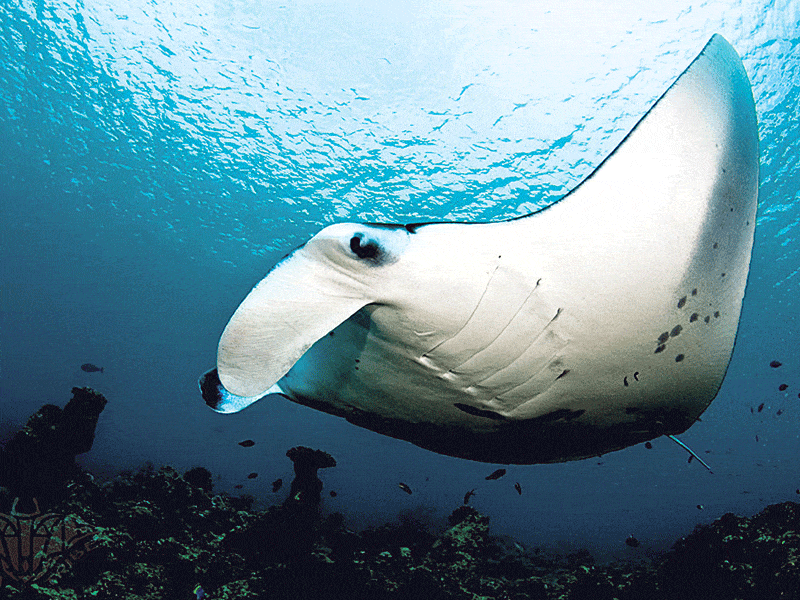Manta rays making increasing appearances this summer
2 min read
From December 2021 to January 2022, Manta Watch NZ received 99 manta ray sighting. Photo: Shiyam ElkCloner | Licensed under CC BY-SA 3.0
With an increase in the number of manta rays appearances this summer, Department of Conservation (DOC) and Manta Watch NZ are urging people to report sightings of the rare, huge fish.
From December 2021 to January 2022, Manta Watch NZ received 99 manta ray sightings, concentrated in the Bay of Islands, the Hauraki Gulf, Mercury Island, the Alderman Islands, and the Bay of Plenty.
DOC marine technical advisor Clinton Duffy says any sightings of manta rays contribute to research efforts and build long-term sightings data records.
“There is a significant population of oceanic manta rays near Aotearoa that we are still trying to understand, but their highly elusive nature means they can often go unnoticed. Not many people know we have manta rays around our coastlines, and it’s important people understand what to do if they spot one.
“Reported sightings of manta rays can help in our efforts to monitor and assist in the conservation of these creatures.”
Over the last four years, there has been an increase in efforts to raise awareness about Aotearoa’s manta rays.
“Historically we’ve had sightings from September through to June, however, ocean goers are most likely to see manta rays in summer, from December to February. During this time, mantas spend a lot of time on the surface actively feeding on krill swarms, making them a lot easier to spot,” said Manta Want NZ (MWNZ) director Lydia Green.
“Every manta has a unique spot pattern on its belly, much like a human’s fingerprint, and cataloguing these ID images enables MWNZ researchers to build population estimates and track individuals over time.
“If you spot a manta ray, take a photo and/or video. Even better if you can get a shot of their belly region. Researchers can learn so much more from images and videos, so trying to record your manta ray encounter is a massive help. And record additional key info, including, date, time and GPS position of your sighting.”
Oceanic manta rays can reach seven metres across and weigh 2000kg. They are protected under the Wildlife Act 1953. It is illegal to hunt, kill, or harm manta rays within New Zealand’s national waters.
Although manta rays are considered harmless, as they do not have barbs on their tails like their distant cousins the stingrays and eagle rays, these gentle giants should be observed at a respectful distance, as with all wildlife, advises DOC. Their inability to swim backwards makes them vulnerable to becoming tangled in ropes and fishing equipment.
Sightings can be reported to DOC by e-mailing sharks@doc.govt.nz. Kiwis can also support citizen science by reporting giant manta ray sightings to MWNZ. E-mail mantawatchnewzealand@gmail.



